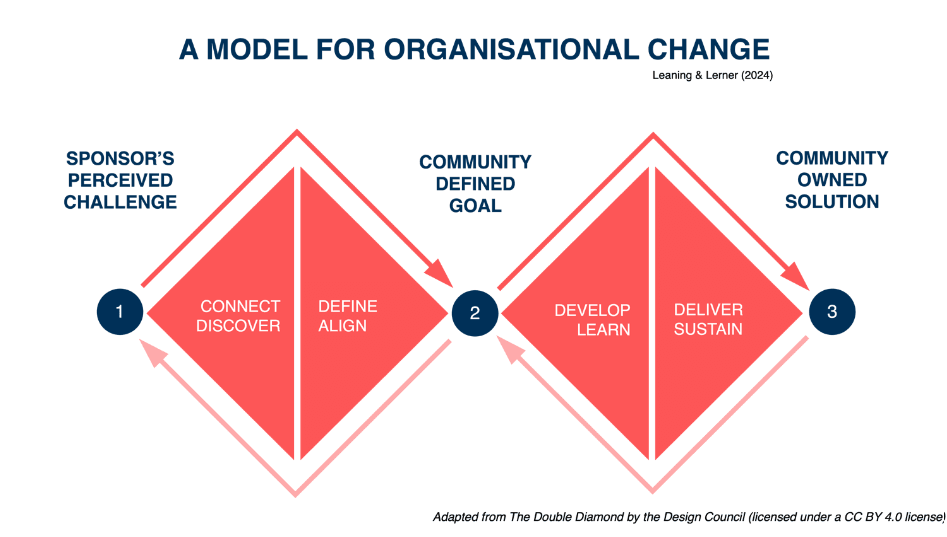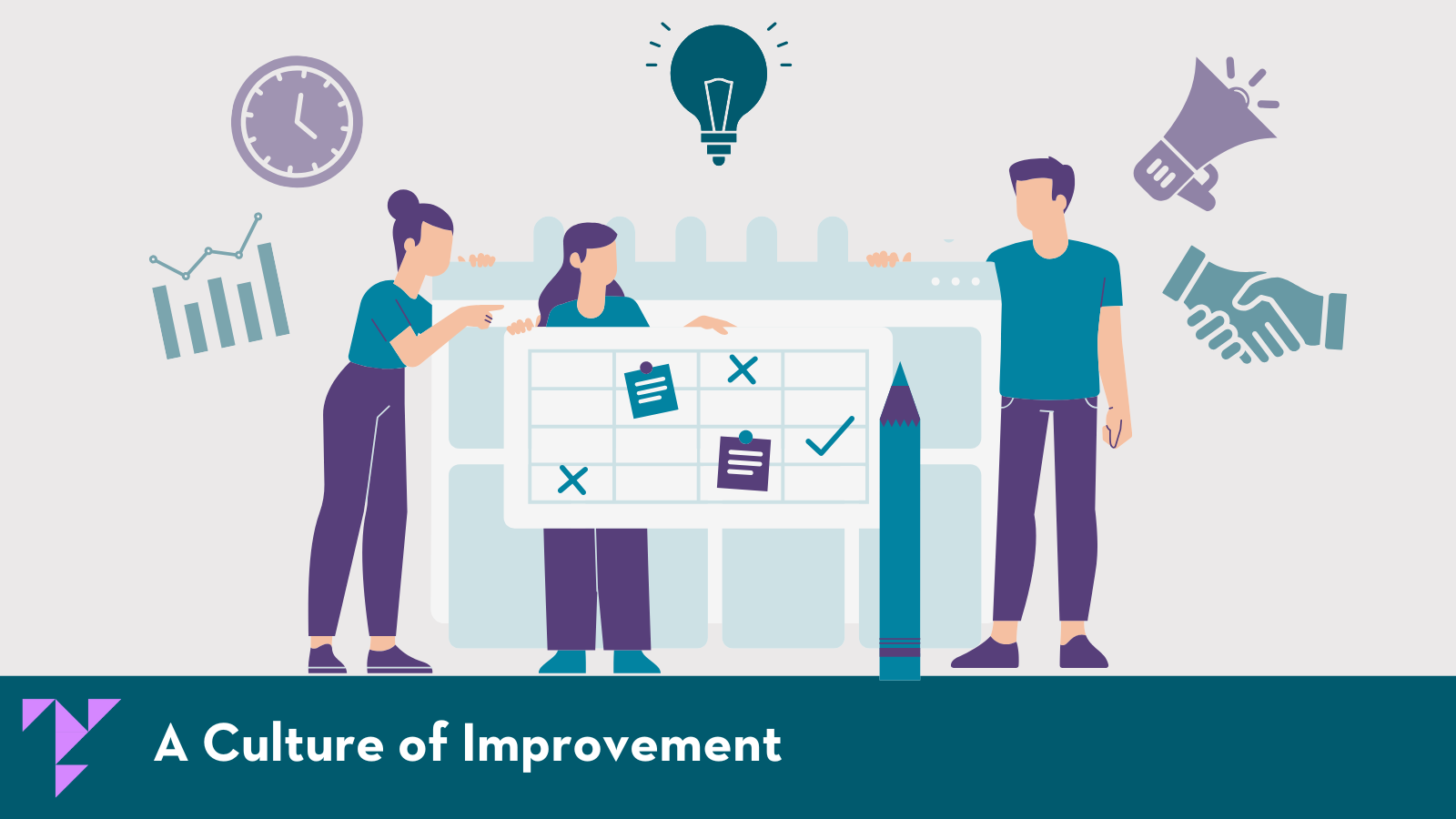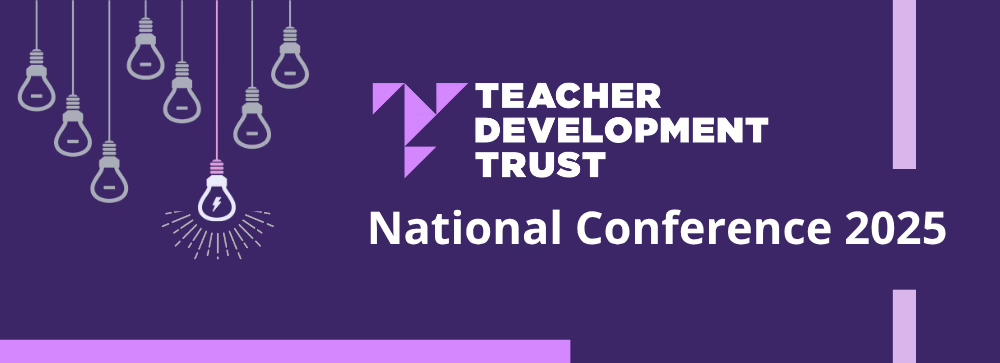Guest post from Shane Leaning, an international school organisational coach and podcaster learning with teachers and leaders across the globe.
It’s been a year of change. Change in politics, changes in social discourse, changes in staffing in our school and dare I say, even changes in which social media platforms (yes, I’m talking about THAT platform).
But change is also nothing new to us in education. Ironically, change is the only constant in our schools and organisations. The very thing we can rely on is change. My colleague, Efraim Lerner, and I have been thinking about change A LOT. So much so, we’ve written a book together on that very topic, ‘Change Starts Here’, out in the Spring. We’ve been thinking hard about how change happens in schools and how we can work our way through these murky waters with openness, stability, and most importantly, our whole community.
Systemic Change vs Local Change
I’ve heard broadly two camps when it comes to the reaction to the new UK Labour government in power, regardless of the view of whether this is a good thing or not. The first group sees big change coming and knows schools will have new missions to respond to. The other group sees this as business as usual – new systemic change, which affects the entire system or organisation and is often driven by external factors such as government policies or societal shifts, doesn’t mean big things for their school on the ground.
Why the two opposing views? I believe it has something to do with organisational confidence: the collective belief and trust in an organisation’s ability to navigate change while maintaining its core values and purpose. The schools that seem to have a larger sense of community identity and clarity of purpose seem less fazed and less likely to experience ad hoc change.
Read our “Culture of Improvement” working paper on teacher working conditions

Lessons Learned working for ‘The System’
For a large recent chunk of my career, I’ve worked in a system-level position, leading teaching development across a large network of international schools. I WAS the system change. And I learned a lot in that time. When I started, I had a strategy – identify shared issues, design a solution, generate buy-in, and roll out. I followed classic change models, frameworks or methodologies designed to guide organisations through the process of implementing and managing change.
The problem was that I was obsessed with the system. Fidelity to my well-researched process, meaning strict adherence to the original plan or model, was always top priority, and I ‘knew’ what would work. When this hit schools, I saw immediate change in practice in many places – great compliance. But change rarely lasted.
Over four years, I ended up shifting my approach, making it more adaptable. Interestingly, the more flexibility that was introduced, the greater the reception. The schools that implemented the best were the ones who started with their own ‘why’, not my ‘why’. They knew their purpose and implemented and used what worked for their needs, not mine. This initially felt at odds with my approach – I thought they were doing it wrong. But after four years, only a few schools had implemented change – and those were the ones that did it their way. Lesson learned.
Change is Complex
I now see that change is inherently complex, particularly when it comes to schools and education. Even seemingly simple changes, such as implementing a new phonics programme to improve reading can face significant and overwhelming challenges. These challenges primarily come from complexity introduced by the human factor. Pupils, teachers, parents, and leaders all bring their own perspectives, expertise, and expectations to the table, creating a web of intricacies that can impact the success of any change.
John Kotter, a renowned expert on change management, regularly points out, the complexity of change goes far beyond the initial implementation. Even when change initiatives are successful in the short term, they often fail to last. To truly embed change into the fabric of our schools, we must integrate it into our daily operations, culture, and values. This requires a deep understanding of the individuals within our organisations and the recognition that each person brings genuine value, regardless of their position.
Diverse Perspectives
While diverse viewpoints and unique talents are invaluable, they can also introduce conflict. Facing these complexities head-on is essential to harness the full potential of an organisation. Ultimately, a perfect change process may never exist, but we can start by asking powerful questions and creating a space for these questions to resonate and sit.
The Double Diamond Model for Organisational Change
Here is a model for organisational change that draws inspiration from the British Design Council’s double diamond model. I co-founded Work Collaborative with my brilliant colleague, Efraim Lerner. Work Collaborative is a research and advocacy group, created to empower schools to lead change for themselves as a community.

While the original model was designed for creating products and designs, we’ve adapted it to embed human interaction and organisational change. The double diamond structure represents the expansion and contraction of thinking, a process that is crucial for effective decision-making and is advocated by many coaches.
The First Diamond: Exploring the Challenge
The first diamond focuses on exploring the challenge or opportunity at hand. It begins with a perceived challenge, which is then examined through the lenses of connection and discovery. Connection involves building foundations of trust and psychological safety within the team, as change cannot happen effectively without these elements. Discovery is about expanding our thinking, looking at the challenge from multiple perspectives, and questioning whether it is the real challenge that needs to be tackled. This expansive thinking helps to generate a range of ideas and potential challenges to address.
The next stage is defining, where we start contracting our thinking. We look at all the challenges identified and decide which one we want to tackle now. This involves creating a shared vision and aligning on our goals for the future. Alignment across all stakeholders – teachers, leaders, parents, community leaders, staff, and students – is crucial for effective change.
In this first diamond, the focus should be on getting your own house in order. This means deeply understanding your challenge and goal within your community before seeking external input.

The Second Diamond: Solving the Challenge
The second diamond focuses on actioning the goal. It begins with the develop stage, where we expand our thinking once again. With our goal in mind, we explore all the potential solutions and identify any knowledge gaps or skills we need to learn to deliver the change. This is where we might approach external organisations or people for support, as we have a clear understanding of our challenge and goal from the first diamond. The final stage is delivery, where we contract our thinking and choose the solutions that speak loudest to us. We then go through the delivery process, ensuring long-term success and adaptability through the sustain stage.
My favourite thing about the double diamond method is that it emphasises expansive and contractive thinking in the change process. By alternating between these two modes of thinking, we can explore challenges, generate ideas, make decisions, and implement solutions that are community-driven AND sustainable.
Moving Forward with Change
Change is hard, messy, and often uncomfortable. Our best bet, I believe, is to start with a clear sense of purpose and a deep understanding of our local context. We need to ask tough questions, engage in honest conversations, and be willing to adapt our strategies to fit the unique needs of our schools.
This doesn’t mean we should ignore system-level changes or best practices from the wider education sector. But it does mean that we should approach them with a critical eye and always start with our goals.
The double diamond method can be a useful tool in this process – encouraging us to expand our thinking, explore multiple perspectives, and then contract our focus to deliver solutions that are both effective and sustainable.
Ultimately, the success of any change depends on the engagement of the people it impacts.
_________________________
Interested in more insights on schools and teacher development? Sign up for our monthly newsletter.


